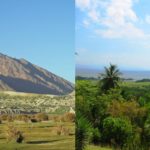On 24 September 2020, young people from around the globe convened for the Youth SDG Summit hosted by UNITE 2030, organized to empower youth tackling the world’s biggest challenges in accordance with the 2030 Agenda for Sustainable Development.
With the theme of the 75th Anniversary of the UN General Assembly, The Future We Want, the UN We Need: Reaffirming Our Collective Commitment to Multilateralism as a fundamental motivation, youth sought to highlight the concurrent relevance of the need for the UN and all Member States to universally recognize the human right to a healthy environment, now more than ever. In the added context of the COVID-19 pandemic, youth reaffirmed that it is increasingly evident that global collaboration is essential to maintaining a healthy environment, promoting sustainable development and global resilience, and protecting public health.
A curated main event entitled The Human Right to a Healthy Environment was organized in support of this powerful campaign for global recognition. Noticing a lack of youth narratives, the purpose of this event was to provide youth perspectives on the importance of the human right to a clean, safe, healthy, and sustainable environment, to generate awareness among youth worldwide on the Global Call, to promote further youth engagement and involvement in environment and human rights decision-making processes, and to apply pressure on UN recognition.
The panel featured the UN Special Rapporteur on human rights and environment, Dr. David R. Boyd, as well as a panel of youth human rights advocates, including Tahreem Shah, an impactpreneur and architecture student from Bangladesh, Laurence LeBlanc, a human rights law student from Canada, and myself, an environmental science student and fashion model from the USA, moderated by Clara Le, a conflict studies and human rights student.
Dr. Boyd enthusiastically championed the force of youth in bringing about tangible change in the recognition of this human right, saying, “We’re living in a global environmental crisis… we’re living in a nature crisis… We need as the scientists are saying and as youth are saying, rapid, systemic, and transformative changes in all aspects of society.”
Moreover, the Special Rapporteur stated, “The right to a healthy environment has the potential to transform our world, and youth are a really big part of that.” Referring to the testimonies he has heard from youth, he attested that “These are powerful stories that youth can bring to the table, that will change the minds of decision makers and change the course of human history. These are stories that empower youth, through their telling.”
The Special Rapporteur also listed the successes of youth around the world in keeping governments accountable to uphold their human rights to a healthy environment, highlighting for instance that, “Young people around the world are starting to use this tool in super inspiring ways… In Colombia, young people filed a lawsuit, that based on their constitutional right to a healthy environment, is going to end deforestation in the Colombian portion of the Amazon.” Along with this example, he promoted the ongoing efforts of Greta Thunberg and 15 other youth, that have a case at the UN Committee on the Rights of the Child against five countries arguing that climate change is against their human rights.
“We’re living in a global environmental crisis… we’re living in a nature crisis… We need as the scientists are saying and as youth are saying, rapid, systemic, and transformative changes in all aspects of society.”
In addition to the Special Rapporteur’s comments, powerful and insightful themes emerged from this discussion, touching on personal experiences from the youth panelists which propel them to advocate for the human right to a healthy environment.
Laurence LeBlanc, speaking of her experience working with the Union of those Affected by Texaco in the Ecuadorian Amazon on Indigenous rights, noted that “Governments are very involved in maintaining the status quo when it comes to environmental degradation.” As a witness to the effects of a tragic oil spill, she relayed the impacts of the pollution on water quality, Indigenous livelihoods, gender equality, and public health.
She also described her experience working with IMPACT, an organization operating in rural Kenya to provide access to land rights information to Indigenous pastoralists. She duly noted an aspect of justice, that “When we talk about these structures that are affecting these people, it’s important to keep in mind the agency of the people that are affected, and that are actively fighting against it.”
“When we talk about these structures that are affecting these people, it’s important to keep in mind the agency of the people that are affected, and that are actively fighting against it.”
Tahreem Shah recalled an experience she had as an architecture student in Bangladesh which first interested her in human rights issues. Asking the audience, “How much do we know about the urban crisis? It is the ripple effect that is completely affecting the livelihoods of the informal sector, which are the labor workforce taking up at least 80% of Bangladesh… these are the people of Bangladesh,” she brought to light a problem invisible to most.
She further provided nuanced perspectives on urban development in Bangladesh, including current issues of population growth and improper sanitation, in tangent with climate change and environmental justice concerns affecting Indigenous people and rural displacement. She called for cohesive action to address these crises adding that to do so effectively, the “SDGs must be synched, or synergized, with reality.”
I advocated for the crucial need for environmental justice in the United States, in addition to intersectionality and government accountability. Drawing a link between the Global Call and the Sustainable Development Goals, I affirmed that “Achieving the SDGs and recognizing the human right to a healthy environment are one and the same.”
Speaking of the history of failure to recognize this human right in the U.S., I highlighted the reality that this neglect has led to the unequal distribution of the greatest environmental and public health impacts on underrepresented communities, particularly Black communities and communities of color, especially “compounded with the impacts of COVID-19.”
I called for the amplification of youth involvement in decision-making processes in a “permanent capacity” and as a “regular process,” not just optionally or occasionally. In light of this and to stand in solidarity with youth globally, I recited a message from Roxana Castellanos, a youth from El Salvador working to promote the Escazú Agreement, and who wrote of the tragic deaths of 212 environmental defenders in 2019. Castellanos expressed that “The human right to a healthy environment is crucial because it is directly related to our human right to life.”
Samia is a 20-year old environmental justice and human rights advocate and international fashion model from the USA. She is a Youth Delegate at UNITE 2030, and a member of the UN Environment Programme Major Group for Children and Youth and the Youth Constituency to the UNFCCC. She is currently a senior undergraduate student at St. John’s University.







